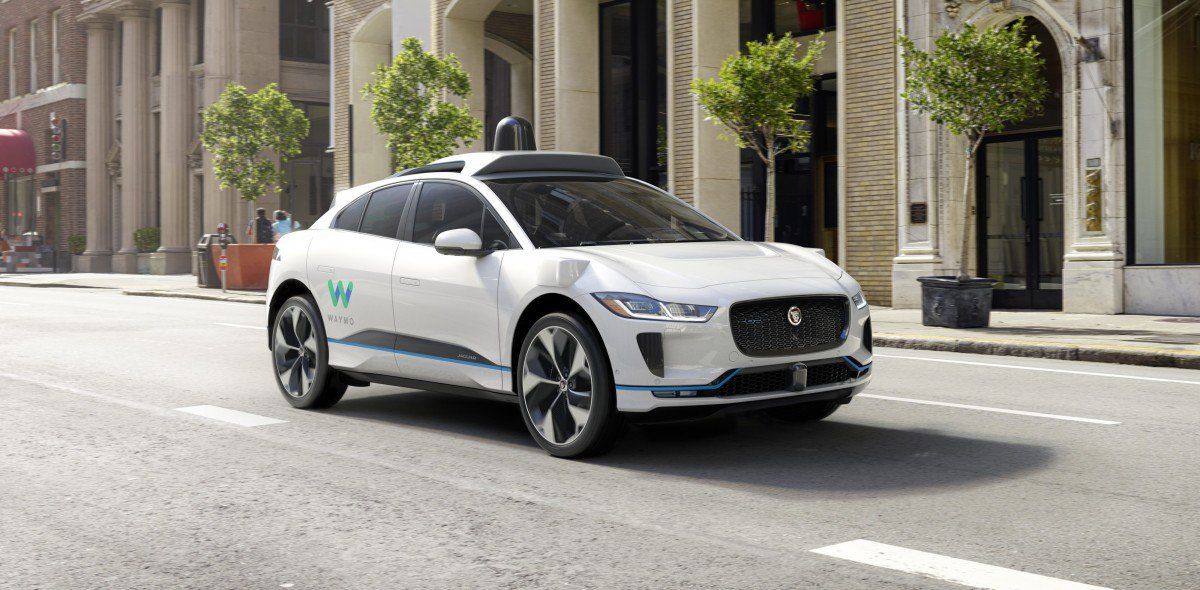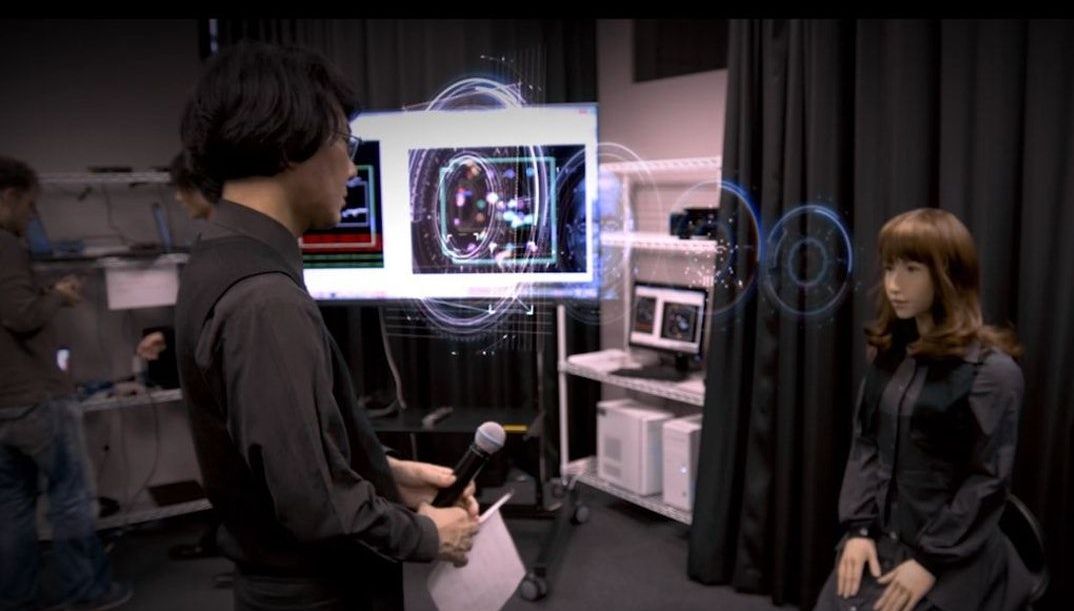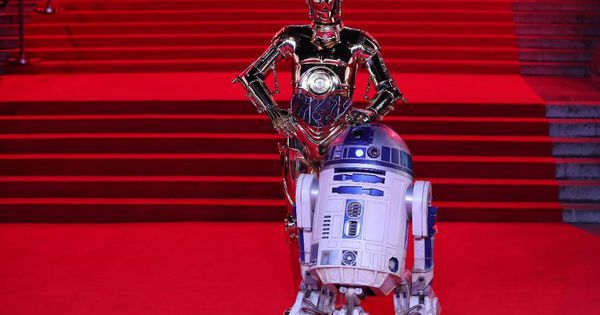The researcher who proved the usefulness of neural networks for image identification has revealed an approach he thinks may be better: capsule networks.
Category: robotics/AI – Page 2,410

AI is helping find lead pipes in Flint, Michigan
The algorithm is saving about $10 million as part of an effort to replace the city’s water infrastructure.
To catch you up: In 2014, Flint began getting water from Flint River rather than the Detroit water system. Mistreatment of the new water supply, combined with old lead pipes, created contaminated water for residents.
Solving the problem: Records that could be used to figure out which houses might be affected by corroded old pipes were missing or incomplete. So the city turned to AI. Using 71 different pieces of information—like the age or value of the home—Georgia Tech researchers developed an algorithm that predicted whether or not a home was connected to lead pipes.
Warfare, rap & shaking hands with Putin: Meet the Russian robots’ futuristic advances
Russian engineers this week unveiled the first undersea drone armed with a rifle. The robot is the latest in a line of Russian-made machines conquering battlefields, surgeries, and even the entertainment industry.
With robots set to play an increasingly significant role in our world, engineers from across the globe are developing new types of machines to automate everything from warfare to healthcare. Russia is no exception and is leading the development of robotic systems in some fields.

The Pentagon Wants AI to Take Over the Scientific Process
The Pentagon’s research arm is looking for teams to build an artificial intelligence tool that can automatically generate, test and refine its own scientific hypotheses.
By essentially automating steps of the scientific process, the tool would let top decision-makers take discoveries from the lab and rapidly apply them to the real world, according to the Defense Advanced Research Projects Agency.
“Automation of model-based inference procedures could increase the speed and accuracy with which these models can be used to address key questions of national security by orders of magnitude,” officials wrote in a request for information published Aug. 17. They said the system could be used to verify the results of scientific studies and monitor “fragile economic, political, social or environmental” events.

Waymo takes a tiny step into China
Alphabet’s self-driving car subsidiary, Waymo, has kicked off speculation about its ambitions for the Chinese market by creating a small outpost in Shanghai.
What’s it mean?: If Waymo is aiming to break into China, then this would be a very preliminary step. The new office might also be something less exciting: a means of working with Chinese hardware suppliers for instance.
Auto revolution: T hat said, it would make a lot of sense for Waymo to target China. It is the world’s largest auto market and a hotbed of technology and market innovation. And while Google’s plans to re-enter the Chinese market have proven controversial, the truth is that China cannot be ignored by any tech company that wants to a global force.
Feasibility Study and Practical Applications Using Independent Core Observer Model AGI Systems for Behavioral Modification in Recalcitrant Populations: Proceedings of the Ninth Annual Meeting of the BICA Society
This years paper that Mark Waser and I did covering our research published by BICA 2018 yesterday with a special thanks to Dr. Jordan from the medical facility in Salt Lake to help with the ‘medical’ related elements of this study, titled:
Feasibility study and practical applications using independent core observer model AGI systems for behavioral modification in recalcitrant populations.
This paper articulates the results of a feasibility study and potential impact of the theoretical usage and application of an Independent Core Observer Model (ICOM) based Artificial General Intelligence (AGI) system and demonstrates the basis for why similar systems are well adapted to manage soft behaviors and judgements, in place of human judgement, ensuring compliance in recalcitrant populations. Such ICOM-based systems may prove able to enforce safer standards, ethical behaviors and moral thinking in human populations where behavioral modifications are desired. This preliminary research shows that such a system is not just possible but has a lot of far-reaching implications, including actually working. This study shows that this is feasible and could be done and would work from a strictly medical standpoint. Details around implementation, management and control on an individual basis make this approach an easy initial application of ICOM based systems in human populations; as well as introduce certain considerations, including severe ethical concerns.

This New Tech Documentary Says We’re Totally Unprepared For The Upcoming Robot Apocalypse
An early moment in the new documentary Do You Trust This Computer? is actually a shot from the Terminator franchise. Human skulls and bones rest among dust and ashes as the robotic soldiers of Skynet march through the remains of an apocalyptic war. What happens between humans and robots in the Terminator films, or other sci-fi movies like The Matrix, War Games, and Ex Machina, might feel like the far away future, but Do You Trust This Computer? suggests that that’s not the case. In fact, the doc implies that we’re much closer to sentient robots walking the Earth than we think – only they may not look exactly like we’ve always imagined, and we are woefully unprepared for the consequences of their consciousness.
Directed by Chris Paine, Do You Trust This Computer? (now playing in New York and available on VOD) explores the role of artificial intelligence in our everyday lives. The film features interviews with some of today’s top AI experts, theorists, professors, and scientists, such as Elon Musk, Westworld creator Jonathan Nolan, and futurist Ray Kurtzwiel. While some people — predominantly those on the side of tech and invention companies — think that AI can help better humanity, most of the others interviewed suggest that we’re on the cusp of something potentially world-ending. As such, the doc offers up a vision of the real near-future that is as fascinating as it is terrifying.
So, what exactly do we have to be so afraid of? After all, there’s plenty of potential good that can come from advancements in AI. Self-driving cars could potentially prevent crashes and save millions of lives around the world; robotics in the medical field can find ailments faster; surgical machines can go where human hands cannot. But automation can also lead to major job loss, the film suggests. Much like the industrial revolution put many humans out of work, so too will robotics. Just take Baxter, an industrial robot, who costs the same amount as one minimum wage worker would in a year, but lasts much longer and can do the work of three people, since he doesn’t need to eat, sleep, or take breaks. Everyone from long-haul drivers and taxi drivers to data entry workers to those in white-collar industries like business, journalism, and medicine will be affected.



Japan teams up with Uber, Boeing, and Airbus to deploy flying cars within a decade
The country isn’t a world leader in autonomous or electric vehicles, but it’s all in on putting cars in the sky.
The news: Japan announced today that it’s bringing together 21 companies and organizations, including big hitters like Uber, Boeing, Airbus, Cartivator, and Japan Airlines, to bring aerial vehicles to the skies within 10 years.
The challenge: The government said it will address one of the major things holding back flying cars: regulation. “The Japanese government will provide appropriate support to help realize the concept of flying cars, such as creation of acceptable rules,” the ministry said. If Japan is able to quickly establish a legal system in which flying cars can function, it could get a jump start over countries like the US, whose Federal Aviation Association has been notoriously slow-moving on things like drone regulation.